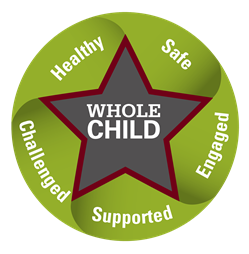Ohio's Whole Child Framework
Ohio Supports the Whole Child
Ohio’s Whole Child Framework places the whole child at the center, with district, school, family and community supporting the needs of the whole child using a comprehensive approach. A whole child approach broadens district and school focus beyond academics to include meeting students' social-emotional, physical and safety needs. It is a student-centered approach that emphasizes the role of families and the community in providing safe environments and rich learning experiences. Whole child strategies include providing integrated student supports, fostering relationship-centered learning environments and coordinating policies, systems and practices. Check out Ohio's Whole Child Framework Infographic to view all of the components of Ohio's Whole Child Framework.
The Five Tenets of Ohio’s Whole Child Framework
 The five tenets of Ohio’s Whole Child Framework are five commonly held beliefs reflecting optimally desired student conditions leading to success in life and learning. When students are healthy, feel safe, are supported through strong systems and relationships, are challenged and experience success, and are engaged in learning that is relevant and meaningful, they are more likely to enjoy learning, develop positive social skills and achieve greater success.
The five tenets of Ohio’s Whole Child Framework are five commonly held beliefs reflecting optimally desired student conditions leading to success in life and learning. When students are healthy, feel safe, are supported through strong systems and relationships, are challenged and experience success, and are engaged in learning that is relevant and meaningful, they are more likely to enjoy learning, develop positive social skills and achieve greater success.
Last Modified: 10/20/2023 2:31:12 PM